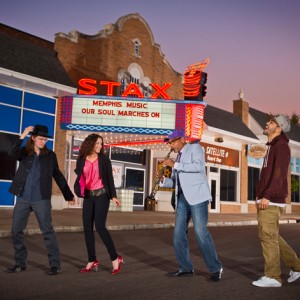Monthly Archives: July 2014
Chewalla Lake & Holly Springs National Forest
Groups of nature loving historians exploring Memphis and the surrounding area will truly enjoy a rest stop at Northern Mississippi’s premier family recreation area in Holly Springs National Forest – “Lands of Many Uses” – a wonderfully quiet and inviting woodland wonder split asunder by deep gullies marked by old split-rail fences, dotted with dozens of sparkling lakes, forested with loblolly and shortleaf pines, dogwood, magnolia, sweet gum and oak and sprinkled with flowering native shrubs, all twined about in the Summertime with grape-scented Kudzu. The park is a breathtaking feast for the eyes year-round: in Spring, when the dogwood blooms and again, when the hills are ablaze with splendiferous Autumnal color; the woods and wetlands provide all manner of resident and migratory wildlife ample habitat and excellent spotting and bird-watching opportunities abound. Holly Springs National Forest is the perfect place to bring a picnic lunch and break from a hectic travel agenda – revel in the beautiful surroundings and enjoy magnificent views of 260-acre Chewalla Lake from the day use/campground area – once an Indian Burial site – threaded with miles of well-marked, peaceful and scenic hiking trails. Kick back on the beach, grab a handful of sweet berries to fortify you along the way as you head for the hills, hunt the elusive wild mushroom, do a little bird watching, explore the tiny island on Chewalla’s western shore, fish for your lunch, jump in a kayak or go for a refreshing swim. Get out of the lake and hop in the shower – (bathhouses are available ) just a few miles away, the historic and colorful plantation town of Holly Springs awaits, offering visitors a fascinating look at the old South when cotton was king; explore well-preserved antebellum homes, slave dwellings, museums, churches and other intriguing points of interest – there are hundreds in the area – then sit down to some tasty Southern cuisine at one of the great eateries in Holly Spring, “Mississippi’s Best Kept Secret!”
Slave Haven Underground Railroad
At one time, Cotton was King in Memphis. For hundreds of years, African people were shipped across the seas to America and sold into the booming slave trade that ensured the Delta’s cash crops were planted, tended and harvested; the city of Memphis rapidly became Tennessee’s leader in the trade business. Eventually, the anti-slave movement saw the uprising of noble citizens who enlisted themselves in the abolition wars to assist runaways seeking their freedom in the Northern states. Jacob Burkle, German immigrant and stockyard owner, was one of them, a man who risked his life and livelihood to help slaves on their way by operating an “underground railroad station” from his modest home near the banks of the Mississippi. Visitors to the Burkle Estate, just a few minutes from iconic Beale Street, are treated to a well-presented tour of the white clapboard house and grounds, wonderfully preserved and recreated in the manner of its day of service with historical documents, period furniture, quilts and other relevant artwork and well-attended by knowledgeable guides who supply – in animated detail – heartrending stories of the dark days of slavery during Jacob Burkle’s time, and the way in which many were aided, en route to possible freedom, with safe haven provided in his home. Guests will learn how slaves creatively transmitted coded information to escape captivity, and see the cellar, crawl spaces and secret passages they used to hide in the Burkle home before continuing their perilous journey North.
Rock ‘n’ Soul Museum
Music fans heading to the the river city blues birthplace of Memphis will be thrilled to find a stop at this historic institution – a shining tribute to decades of struggle, upheaval, change and triumph that inspired people everywhere to re-think the way they listened – at the top of their itinerary. Visitors to this popular attraction located on legendary Beale Street on the corner of Highway 61 at the world-famous FedExForum sports complex and across from Gibson Guitar are introduced to the fearless musical pioneers who overcame daunting racial and socio-economic barriers to craft the music that would ultimately shape a city and shake the world to its core. The Rock ‘n’ Soul Museum, developed in unique cooperation with the Smithsonian Institution, tenders guests a personalized Blues City music experience they won’t soon forget, with a convenient digital audio tour showcasing more than five hours of music – more than 100 songs – and fascinating information accompanying guests at their own pace through seven galleries jam-packed with musical instruments and artifacts and surprising treasures, serving up a comprehensive cross-section of the rich history of that unmistakable, unforgettable sweet Delta sound. Summarily? The Memphis Rock and Roll museum delivers a toothsome “biography” of the transformation of a gritty southern city mentioned in more songs than any other on EARTH – to a music mecca and the heart of the rock and soul industry – the whole story – through its amazing series of exhibits and presentations. Ready to listen? Step inside.
Gibson Guitar Factory
Davies Manor Plantation
Groups looking toward an unforgettable Memphis holiday will definitely want to plant a visit to Davies Manor Plantation – Century Farm, National Wildlife Federation-certified Backyard Habitat, and site of the oldest family home in Shelby County, Tennessee. The extensively-restored 1807 two story white oak chink and log plantation home rests on a lovely wooded piece of what was once a thriving 2000 acre operation, along with an assortment of wonderful outbuildings including a small cabin at one time occupied by Moses Frazier, a slave who toiled at Davies Manor for 50 years; prior to the Civil War, the Tennessee plantation supported approximately 23 enslaved African Americans. Tours begin with a short familiarization video and take guests through the log home and around the grounds and a series of carefully planned demonstration gardens and interpretive exhibits, providing an informative and realistic cross section of Colonial plantation/farm life while highlighting the inevitable changes to the estate that resulted from multi-generational occupancy. Careful excavation of a small “mound” in the front yard of Davies Manor revealed a few very small potsherds from the Woodland Indian Period; this is not surprising due to the presence of an Indian trail that wanders from Stage Road through the property and over Anderton Springs. The well-preserved structures and their rough-hewn contents are a testament to the true rigors of life on a typical southern plantation, and visits afford guests a priceless opportunity to trace the Davies family history through most of the 19th century and on to the present day with its challenges of maintaining and preserving the historic property for future generations.
Nelson-Atkins Museum of Art
Groups of History and Art aficionados exploring the crème de la crème of Kansas City won’t want to miss a tour of the Nelson-Atkins Museum of Art – a world-class institution “where the power of art engages the spirit of community.” This fine museum and world-renowned example of neoclassical architecture is dedicated to enhancing the enjoyment and understanding of the visual arts and cultures they represent and strives, through careful presentation of its comprehensive collections of more than 33,500 works, to bring visitors a rich and ever-evolving experience as they view its myriad exhibits and wander the verdant 22 acre sculpture park showcasing 33 important modern pieces. While the Nelson-Atkins is widely celebrated for its extensive collection of Asian art, especially that of Imperial China, their European painting collection is highly prized and contains celebrated works by masters Monet, Rubens, van Gogh, Rembrandt, Titian and Degas. A suite of American Indian Art galleries honoring the artistic achievement of Native Peoples from across America houses an amazing and diverse body of works from pre-contact to the present and includes includes pottery, basketry, quill and beadwork, textiles, painting and sculpture and an exciting – and growing – contemporary collection, while the ancient art assemblage at Nelson-Atkins is of the highest quality, brilliantly representing a 4000-year cross section of the great civilization of the Near East, Egypt, Greece and Rome. Guests will find every visit to the museum offers new and exciting discoveries; a stimulating range of current and upcoming exhibitions such as Across the Indian Country: Photographs by Alexander Gardner, 1867-68, The Plains Indians: Artists of Earth and Sky, Rodin: Sculptures from the Iris and B. Gerald Cantor Foundation, Living with the Spirits: Decorating Homes in Traditional China, Edgar Degas Pastels and Presence & Absence: New Works by Tom Price bring the Museum’s many exceptional collections of art together with magnificent works from world-renowned art institutions and outstanding private collections in a breathtaking, thought-provoking visual feast.
Peabody Hotel Ducks
Groups exploring the birthplace of the blues won’t want to miss a fabulous and FUN Memphis area tradition – which started at the Peabody Hotel back in 1933 when Frank Schutt, general manager of the hotel, returned from a weekend hunting trip in Arkansas. A group of his best hunting buddies, likely having enjoyed a bit too much Jack Daniels, thought depositing a trio of their live decoys – three small English ducks – (later replaced with five Mallards) in the hotel’s luxurious Italian fountain would be an appropriate homecoming welcome; the public’s reaction was nothing short of enthusiastic. Eventually the ducks would fall under the tutelage of a former circus animal trainer and a routine was perfected, with the current “duck team” residing in “The Duck Palace” on the hotel roof – living the “Life of Riley,” duck-style. Daily, at 11 am, the Peabody Duck March commences, and the ducks are led by the Duckmaster into the elevator and down a red carpet to the beautiful travertine marble fountain in the lobby to the tune of John Philip Sousa’s King Cotton March; the crowds of guests and admiring spectators go wild! The beloved show is reversed, nightly, at five pm, when the mallards return from a hard day of play in the fountain to their Palace atop the hotel. A freshly trained team of five is brought in every three months, with the previous group retired and returned to the farm they hatched on to live out their days. The Peabody Ducks have become quite the sensation and regularly enjoy the escort of honorary celebrity Duckmasters including Patrick Swayze, Larry King, Paula Deen, Emeril Lagasse and Kevin Bacon.
Stax Museum of American Soul
World of Fun/Oceans of Fun
Groups of die-hard amusement and waterpark fans on Kansas City excursion looking for a rockin’ good time don’t have to argue about who goes where first! At everyone’s favorite Worlds of Fun / Oceans of Fun, a fantastic combined amusement/waterpark experience, guests can have it ALL; the only waiting will be in line for the rides- and a fast lane pass zips you right through! This 235-acre mega-universe of mild-to-wild , wet-and-wacky rides, special attractions, good, old-fashioned midway fare – including family-style bbq – and buckets of live entertainment serves up more fun than you can shake a stick at – “one park, one price-twice the thrills!” Test your mettle on rides like Detonator, RipCord, Thunder Hawk, all-new Steel Hawk and Mamba, or kick it family-style on Finnish Fling, Viking Voyager, Worlds of Fun Railroad and Grand Carousel – but be advised: little ones are VIPS at Planet Snoopy! Dinosaurs Alive is guaranteed to scare the stuffin’ out of you while Oceans of Fun’s Castaway Cove Adult Pool/swim-up bar, Diamond Head, Crocodile Isle, Monsoon, Predator’s Plunge and Shark’s Revenge – the list goes on – will ensure you plenty of chill time in and around the water; celebrate the 4th breathtaking fireworks shows at 10 pm Friday and Saturday nights. The World is your oyster at Worlds of Fun / Oceans of Fun in Kansas City – slide all day and ride all night – there are even cabins and cottages with all the amenities available to make your group’s playdate as convenient as possible – why waste time navigating traffic when you can wake up, freshen up and hit the parks ‘til bedtime? What could be better than THAT!?







